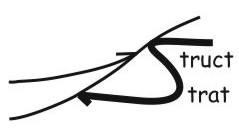
STRUCT-STRAT
The linked study of deformation and depositional processes
on submarine slopes
Submarine
slope systems host hydrocarbon resources that are of increasing economic
importance. Many industry projections indicate that deep-water settings
offer one of the few areas for organic reserves growth in the coming decades.
However, exploration and production costs are high, the structures commonly
difficult to image directly and reservoir distribution and performance
hard to predict. We believe that risk can be substantially reduced through
combined structural and stratigraphic analysis, founded on a dual strategy
of numerical modelling and validation through analogue case studies. Submarine
slope systems also contain important geo-hazards together with exceptional
research opportunities for investigating the feedbacks between surface
processes and deformation. All of these drivers combine to make integrative
geoscience research on slopes systems, through the marriage of stratigraphic/depositional
geology and structural geology, most timely. Furthermore, the background
research in each of the contributing geoscience disciplines is now sufficiently
advanced, from robust depositional models, understanding of structural
evolution, the development of structural and stratigraphic modelling software
and the acquisition of high quality deep-water datasets. The challenge
now is to combine these understandings. This is the over-arching objective
of our Struct-Strat Project.
Interactions between deposition
and deformation operate at all scales on submarine slopes. At the largest
scale, sediment loading drives whole-slope failure while the deformation
created by slope failure influences sedimentation. Individual structures
such as extensional faults on the upper slope and compressional folds
and thrusts towards the slope toe create mini-basin morphology that impacts
on sedimentation, especially net-to-gross variations in deep-marine clastics,
while the sedimentation itself impacts on the dynamics of individual deformation
structures. Furthermore, the architecture and evolution of individual
faults and folds will be strongly influenced by bed geometry. We believe
that studies at each of these scales inform the others, providing boundary
conditions for numerical modelling, tests of geological histories and
a robust framework within which detailed investigations can be placed.
The Struct-Strat initiative will run in parallel with the on-going Turbidites Research Group (TRG) programme) in Leeds which has a long tradition is delivering high-quality research to the hydrocarbons industry. Current TRG sponsors include BG, BP, BHP-B, Conoco-Phillips, Kerr McGee, Norsk-Hydro and Shell. Although the new project is entirely distinct from TRG programmes, it is complementary to them. We offer discounts to TRG sponsors who support the Struc-Strat programme.